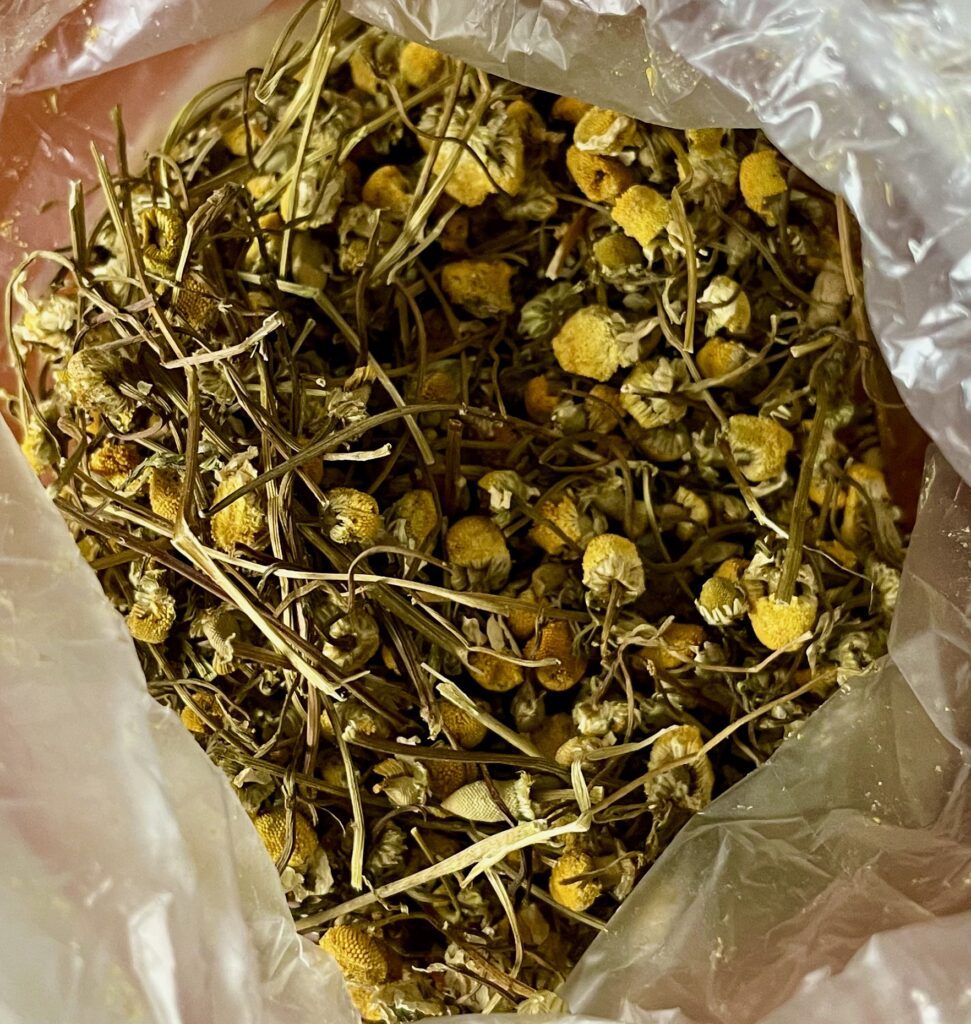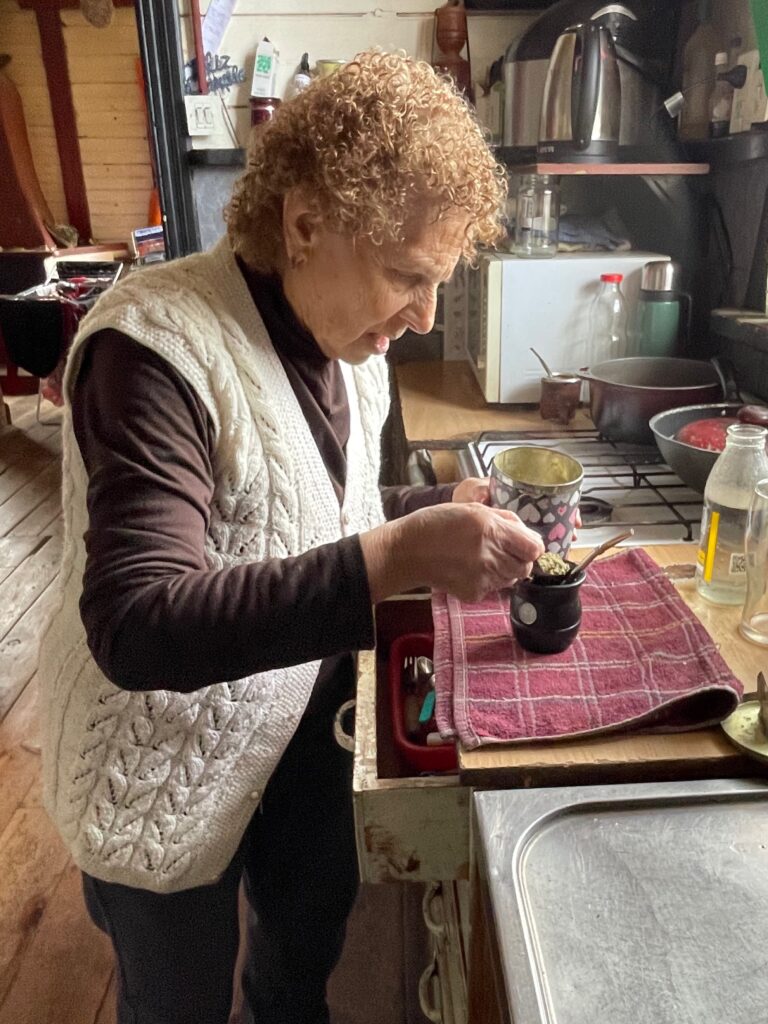Everywhere you go in Argentina – every street, every park, every business – you will see a local with a cup in one hand and possibly a thermos under their arm. What is this all about? As I would come to understand, it’s the most sacred and beloved of Argentine traditions, and now it’s time for you to learn about it too. It’s time for a mate!

What’s Mate?
Mate is a caffeinated drink made from the dried, toasted and shredded leaves and stems of the yerba mate bush. This is called yerba (pronounced shairr-ba), and technically not a tea. The cup you drink from is called a mate (ma-tay). The ritual of drinking this concoction in a social setting with others is also called mate, as in “Let’s drink a mate!”
It’s not too far-fetched to say that mate is literally part of the Argentine blood-line. It has been traditionally consumed in this region for centuries and it is revered as a rich source of vitamins, minerals, antioxidants, and beneficial compounds. Since it has an enormous amount of caffeine (70 mg/ cup compared to 35mg of caffeine per cup in green tea), it also serves as a slow-releasing energy boost throughout the day, proven to stimulate hunger, and help with digestion and weight loss.

Ofcourse, the locals will tell you all of this while they offer you a sip, but the health benefits are not what’s important. Their passion for mate is all about the ritual of the sharing. The fact that mate is not offered in restaurants or bars is a clue. It’s a personal thing, to be enjoyed in a moment of relaxation among family and friends.
Mate Production
Yerba Mate is only grown in the humid northern provinces of northern Argentina, Paraguay, Uruguay and a few places in southern Brazil where it is known as chimarrão. Although everyone has an opinion of where the best mate comes from, nobody can argue that Argentina is the powerhouse of production growing over 170,000 tons of it each year.
Each fall-winter (which is March-July in this hemisphere), the leaves are harvested from the very tall bush by hand or with small electric scissors. The leaves then go through a double drying process. The larger, lesser quality leaves are picked out to be used in a product called Mate Cocido, which means the leaves are shredded and sold in inexpensive packages or in tea bags.
Next, the smaller and higher quality yerba leaves are coarsely chopped and stored in a temperature-controlled environment to age for months or even years.

Finally, the yerba leaves are chopped again and taste tested for well-balanced flavor and quality. Then they are packaged for sale. The yerba packaging lists the type, age and size of leaves as well as if the mixture contains a high percentage of stems and other blends of herbs and flavors. Why would anyone want the stems?, I wondered. Then I found out that a higher percentage of stems smoothes out the flavor and actually adds nutritional value to the drink. But don’t worry, the stems won’t get in your teeth!
To have a mate, you first need a cup (the mate itself), the bombilla and the liquid. A friend is optional.

The Mate, or Cup
Traditional mate cups have been carved from wood or a gourd. These have to be cured or cleaned regularly so they don’t develop a mold. Other mates might be made from bone or cow horns. Some mates have wide or narrow mouths, they might be short or tall, or rimmed in metal, engraved, painted or covered in leather as a decoration. Many people like to buy new mates as souvenirs when they travel. Others like to buy travel mates for the car. For example, they have silicone and plastic non-spill mates like sippy cups, or mates with glow-in-the-dark rims so that you can see it at night when you are pouring the water. The style of cup you choose is completely based on personal preference, but locals insist that each type of vessel infuses a different flavor.





In a touristy place such as Bariloche, every shop offers fancy mate carrying cases and mate cups of all designs to sell as souvenirs.

The Bombilla
The bombilla (bawm-bee-yah) is a special metal straw with a strainer on one end used to filter out the dust and stems of the yerba. It is made of different kinds of metals that insulate the water on the inside, remaining cool to the touch and to the lips on the outside. Historically, people used a bamboo cane but different shapes of metal and plastic bombillas are widely used today.

The Water
Water temperature is very important for mate drinkers. If the water is too hot, it will “burn” the leaves and produce a bitter flavor. That said, if you add sweetness, you may need hotter water to help it dissolve. Electric tea kettles are very popular here in Argentina and I have noticed that many of them have a special “mate” setting so that you can consistently heat your water to the same temperature (around 150-180 degrees F).

The Yerba
There are so many different brands and flavors of yerba filling the store shelves and specialty shops. What you buy completely depends on your taste preference and what your family is accustomed to; at its very basic, yerba is usually a little bitter and earthy. Many people like to buy it with other flavors infused or they take it home and add their own. Children often like it a little sweet by adding sugar, honey, molasses, fruit juice or milk instead of water.
Lorena taught me how she buys the yerba from the store, but then adds her own mixture of manzanilla (chamomile), moringa (moringa), and cola de caballo (horsetail)- all herbs that are good for your hígado (liver). To the hot water in the thermos, she then adds genjibre (ginger), limón (lemon), cúrcuma (turmeric) and pimiento (pepper which activates the turmeric). These spices are good for reducing inflammation and good for digestion. Other favorite additives include orange peels, cloves, and cinnamon.



Moringa, Manzanilla (chamomile), and Cola de Caballo (horsetail) are herbs that are common to add to the yerba for more health benefits and flavors.
In the summer, people often drink the yerba using cold water (known as a tereré), fizzy fruit drinks, or flavored sodas like lemon-lime or grapefruit. They also might hollow out an orange or grapefruit to make a fruit mate cup.

The Mateada
Most locals told me they average at least 3-4 mate breaks per day. They might drink it in the morning before or during work, before lunch and then late afternoon or after work with loved ones. Because it is a strong stimulant, most say they don’t drink mate in the evening. That said, Argentinians famously don’t eat dinner or go to bed until very late in the night and I wonder if some of that is due to a culture of drinking so much caffeine throughout the day.
Mate is shared between family members and friends in a gathering called a mateada. Every time you pass by a green space or a public bench you will see someone sharing mate. I became a big fan of this ritual when I saw how many parents took time for a mate in the park after picking up their children from school. Just having that time together everyday outside is such a precious ritual.
But it’s not just for families. I was on a tour once and a participant proceeded to pack a mate in her lap and share the drink with the tour guide, the driver and anyone else in the group who wanted a cup. Everyone is included in this social ritual. But watch carefully, there’s a specific way it is always done.

The Very Strict and Traditional Rules of a Mateada
1.If you are a traditional Argentine, you will carry mate equipment with you almost everywhere you go. This includes a bag of yerba, which might be in the original packaging, or repackaged in a designer tote which allows you to cleanse some of the dust from the yerba upon transfer. You will also have the mate cup, the bombilla (or straw) and a small towel in which to lay on your lap to keep from making a mess. Next, you always carry a thermos which you can refill with hot water in almost any convenience store or public hot-water dispenser. Finally, you carry this all in a special mate backpack, or over-the-shoulder tote made of leather or cloth with the latest trendy designs. Please note, if you don’t want to bother with all of the accessories, simply pack your mate cup with the yerba at home, and carry your thermos under your arm to enjoy your mate anywhere. And I mean anywhere!
2. When someone else invites you to a mate, you don’t bring your own kit. You drink from their mate cup. They are the host, or cebador.
3. You may be invited to have a mate in someone’s home, but very often, people gather in public parks or squares to enjoy a mate outdoors together.
4. When you first sit down to have a mate, your host will place the bombilla in the cup, and loosely pack the mate with fresh leaves about 3/4 full. Then they will add sweetener (optional) and fill the cup with hot water, pouring only down the stem of the bombilla or opposite of the bombilla. They will sip from the bombilla until all the water is gone. The host drinks this first cup of mate because it is often quite bitter. The flavors mellow with each successive cup.
5. Next, the host will refill the cup with hot water, and then turning the cup, will pass the mate so that the bombilla faces the person on their right. It is important to remember to never touch the bombilla with your fingers, and never stir the yerba. Sip quietly until the water is finished, chatting all the time, and then return the cup to the host.
6. The host will refill the cup again and if there are other people you are sharing with, the cup will go to them. The host always does the pouring and the offering of the mate to each participant around the circle. The order never changes, so this isn’t like a social party where people get up and move about. Everyone stays seated in the same order and each mate is passed to all the people in the circle until the water from the thermos is gone.
7. This is a slow and relaxing ritual. The host sets the pace of the back and forth and often people use this time to enjoy conversation with no other distractions.
8. Anybody else that comes along might also be invited into the circle to share.
9. During this ritual, you never say “thank you”, until you are expressing that you don’t want any more and your turn will be skipped from then on.
10. When the thermos is empty, and the socializing comes to a logical conclusion, the spent yerba leaves are poured into a small bag to be thrown away or composted for a garden. The mate cup is brushed out with a cloth and the mate kit is packed up before you all go on your way.



A sneak peak into families and friends sharing mate at home, in their backyard and in the park with a view. It’s a very special time and tradition in Argentina.
If you’d like to know more about the traditions of mate, I found this website incredibly helpful: https://yerbamatero.com/blogs/guides/yerba-mate
Thank you to my friends Andy, Lorena and her mother Olga for sharing their expertise, and a traditional mate, with me.




Gretchen Vos
So are you a mate drinker yet? It’s such a different kind of caffeine feel than coffee or chocolate or regular (chinese) tea.
Did you know that mate is closely related to holly? so it’s kinda appropos that you posted this during Christmas season.!
Whatcha doing on the 24th/25th? Which day is more important in Argentina? Ivo broke his ankle (lower leg) last week ice skating like a maniac. He’s on crutches, in a boot, and I am his chauffeur. It’s crimping his skiing, skating and outdoor fun. Luv ya, Gretchen
Scott
This is the most relaxing caffeinated post I’ve read. Thanks, Becky!
Kevin McConnell
Thanks for the mate story, Becky. I’m a long time fan of the drink but was not aware of the social ritual.
Take care.
Gayle Warberg
I’ve never heard of mate. Thank you for sharing this interesting tradition. I really appreciate your diligence digging into Argentinian culture and sharing it with us! Sending you love and hugs!